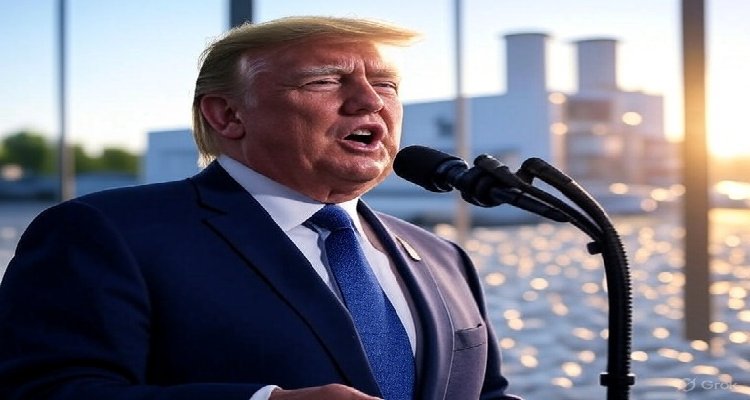Trump Announces 100% Tariff on Patented, Branded Drugs
President Trump has announced a 100% tariff on branded, patented drugs, a move aimed at boosting US pharma manufacturing but raising concerns for India’s $8.7B drug exports.
Introduction: A Trade Shock With Global Ripples
In a move that could redefine global pharmaceutical trade, US President Donald Trump has announced a 100% tariff on all branded and patented drugs. The decision, framed as a push to strengthen domestic pharmaceutical manufacturing, is set to send shockwaves through the world’s largest medicine market and its key suppliers—particularly India, which provides nearly half of America’s generic medicines.
Context & Background: America’s Dependence on Global Pharma
The United States is the largest pharmaceutical market in the world, importing a staggering $233 billion worth of medicinal products in 2024, according to the Census Bureau. Much of this supply chain relies on overseas producers, with India at the forefront.
India exported $8.7 billion in pharmaceutical products to the US, accounting for 40–47% of all generic drugs consumed in America. These low-cost generics have long been essential in making healthcare more affordable for millions of Americans. For Indian companies such as Sun Pharma, Dr. Reddy’s, Lupin, and Aurobindo, the US market is not just lucrative—it represents as much as half of their total revenue streams.
Trump’s latest tariff order, however, threatens to upend this delicate balance.
Main Developments: Tariffs Beyond Pharma
Trump’s announcement marks his toughest trade stance since April, when sweeping reciprocal duties were imposed on nearly all US trading partners.
The new measures include:
- 100% tariff on branded, patented drugs
- 50% tariff on kitchen cabinets and bathroom vanities
- 30% tariff on upholstered furniture
- 25% tariff on heavy trucks, effective October 1
Notably, the pharmaceutical tariffs will not apply to companies that establish manufacturing plants within the United States, underscoring Trump’s push for domestic production.
Expert Insight & Public Reaction
Trade analysts say the announcement is strategic but risky.
“The US is trying to cut dependence on foreign pharma supply chains, but tariffs of this magnitude could raise medicine costs for American consumers in the short term,” said Dr. Karen Mitchell, a Washington-based healthcare policy expert.
Pharmaceutical lobbyists and consumer advocates have voiced concern that branded drug tariffs may not significantly benefit US patients, who largely rely on generics for affordability. Instead, they argue, the move could strain access and inflate prices.
Indian pharmaceutical executives, meanwhile, are bracing for a major setback. With already thin margins in the US, higher tariffs could erode profitability and force companies to rethink export strategies.
Impact & Implications: Who Wins, Who Loses?
- For US Pharma: Domestic manufacturers stand to gain if companies shift operations stateside. Trump’s policy could encourage new plants, jobs, and investments within the US.
- For American Patients: Consumers may face higher drug prices, especially for branded treatments, until domestic production catches up.
- For India: As the leading exporter of generics, India is poised to be hit hardest. Indian pharma firms may lose billions in revenue, and their reliance on the US market makes them particularly vulnerable.
- For Global Trade: The tariffs add to an escalating trend of economic nationalism, signaling that pharmaceutical supply chains are becoming the newest frontier in global trade wars.
Conclusion: A Precarious Balancing Act
President Trump’s decision to levy 100% tariffs on patented, branded drugs is both a bold domestic economic strategy and a geopolitical gamble. While the move is designed to stimulate US-based production, its ripple effects could increase medicine prices for Americans and undermine India’s role as a lifeline supplier of affordable generics.
As October 1 approaches, the world will watch closely—balancing the promise of economic protectionism against the reality of healthcare accessibility.
Disclaimer :This article is for informational purposes only. It does not constitute financial, trade, or healthcare advice. Readers are encouraged to consult experts for individual guidance.











